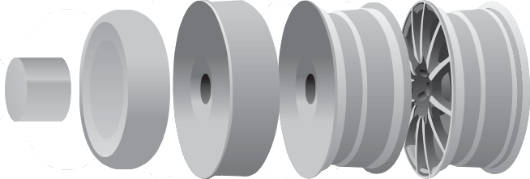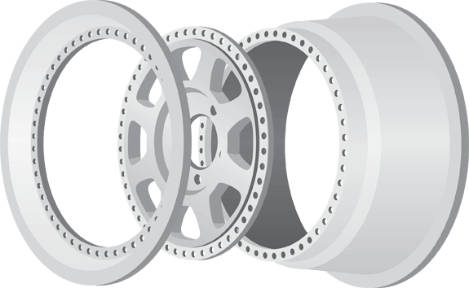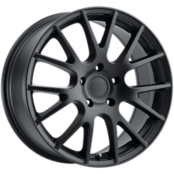It can be challenging to find the right rims for your ride with so many different wheel types and finishes available. But style isn’t the only factor you should consider when choosing your rims. In fact, one of the most important distinctions in wheel types are in the materials and construction process used to build them.
FINDING THE RIGHT WHEEL FOR YOUR RIDE
The right wheels for your ride should depend on why you need them. Picking one that’s suitable in strength and performance will ensure you don’t end up with a race car that drags (wheel too heavy) or an off-road truck that can’t hack the trail (wheel not strong enough).
Most modern wheels use either steel or aluminum. Aluminum is a common component in alloy wheels.
Steel wheels are generally heavier than aluminum and typically welded from two pieces. Aluminum and alloy wheels are often one-piece construction but can be multi-piece, too.
Material is important but wheel construction can also make or break your wheel’s performance.
TYPES OF WHEEL CONSTRUCTION
Cast Wheels
Cast wheels are formed by pouring molten metal into a mold. As the metal cools, it hardens into the desired shape and form.
There are several different types of casting, each with their own benefits and drawbacks.
Gravity Casting
Gravity is used to create the force needed to fill the mold. This allows for a simple, cost effective method. Aluminum is not as densely packed as other processes so gravity cast wheels may be denser to achieve the same level of strength.
Low-Pressure Casting
Molten aluminum is rapidly pumped into the wheel mold using low air pressure to create a dense, strong product with fewer imperfections. This is a common method because it creates a lighter, stronger wheel without an increased cost.
High-pressure Casting
Uses a higher air pressure to pump molten aluminum into a wheel mold for a denser, stronger final product. High-pressure casting can be significantly higher without significant gains in strength or weight compared to low pressure casting.
Forged Wheels
Forged wheels are made using a solid billet of aluminum shaped under extreme heat and pressure. Forged wheels are often considered the best one-piece wheel construction method as they deliver the maximum density and the lightest weight.
Forged wheels are sometimes called billet wheels.
Flow formed/Rim-Rolling Wheels
Flow formed wheels, also called rim rolled wheels, are made using a low pressure casting that is then spun on a specialized machine.
The outer portion is heated and rolled to shape the rim to achieve the desired width and shape. The application of heat, pressure, and spinning yields a strong, lightweight rim.
Flow formed wheels are similar to forged wheels but come at a lower price point. It is a common process to manufacture OEM wheels for limited edition high performance vehicles.
Multi-Piece Wheels
Multi-piece wheels consist of two or three separate parts. They can be constructed using the same or several different methods we’ve already mentioned. The rim and center section are formed separately and then attached by welding or bolts.
They tend to push the boundaries with style, finish, and performance and therefore tend to be the most expensive option.
Multi-piece wheels are typically found as original equipment on exotic supercars or luxury sports vehicles.
Ready to roll?
If you’re having trouble deciding on the right rims for your ride, check out our wheel visualizer. You can see how wheels will look on your exact vehicle, including make and OE paint color.
But if you’re still not sure, give us a ring or drop in. We’ll help you get the best possible option (and price) for you and your vehicle.
Walk-ins are always welcome but we encourage you to buy and make your appointment online first. Customers who buy and book online wait less time in-store!



